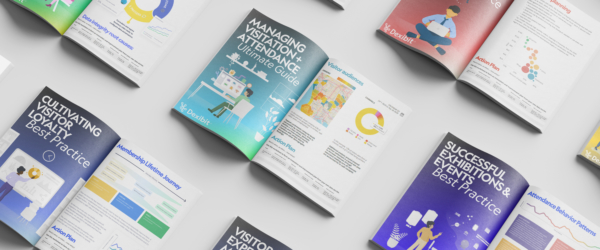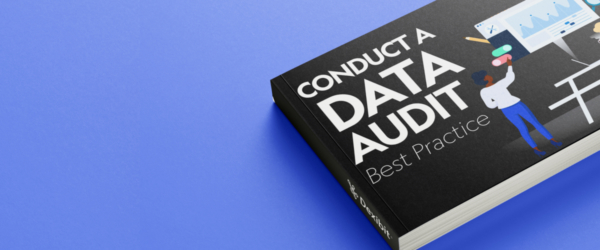5 ways attractions are using marketing to generate demand
- In Demand, Marketing
- Articles
- 5 min read
Generating and capturing demand is a key component to recovery to hold audiences and regain visitation, in the wake of COVID-19.
Here, we take a look at how attractions globally are generating demand through redefining target markets, building staycation campaigns and capitalizing on earned media. Plus, we cover examples of how to convert and capture demand through marketing communications that exemplify health and safety while presenting an offer that’ll be too hard to refuse with special prices and deals.

1. A future on sale: special offers
Pricing strategy in recovery presents two options (somewhat dependent on any variable cost to serve) – either maximize the revenue opportunity if visitors have limited competitive options due to closures elsewhere and travel restrictions or make the most of capacity through volume (particularly if onsite spend will account for any admission offer).
For those sweetening the deal by offering prospective visitors a special price, this can work well in a variety of ways:
- Attractions reopening with a limited onsite experience introducing a special price while parts of their site are closed
- Flash sales with special pricing for tickets bought before a specific date
- Holiday pricing (such as black Friday or Boxing Day sales)
- Discounts on season or annual passes, particularly popular with ski resorts
- Lowering general admission prices to cater for more price sensitive international tourists
- Removing general admission in favor of onsite spend
- Adjusting general admission to a discounted rate during quieter days of the week
- Offering discounts on bookings made further in advance
- Partnering with neighboring attractions a set price for the group (particularly in the absence of city pass operations closed due to COVID-19)
- A special price and time reserved for higher risk or other community members (such as older audiences, or healthcare and essential services)
At Disney, the resort has spent the latter part of 2020 pushing pre bookings for the first quarter, offering up to a 35% incentive.

Via the Disney World website
2. Staycation campaigns
With local and drive in visitors making up the most of visitation post-COVID, most attractions have focused on staycation campaigns, often working with neighboring venues or tourism destination marketers.
This is a great time to tap into patriotism, community spirit and loyalty to hyper locals unable to travel and ready to enjoy exploring their surroundings like a tourist. Rob Baker, Director of Marketing and Creative Strategy at The Museum of Modern Art (MoMA), speaks to the museum’s staycation strategy as a hit for New Yorkers with a reopening campaign focused on the idea of ‘being a New Yorker again’.
Rob says, “We’ve been able to test some of the messages we’re putting out to audiences. One of them was the idea that you can experience MoMA without the crowds and that has been a message that’s really resonated. The feedback we’re getting from audiences coming into the museum now is just really positive. They’re really thrilled to be able to come and experience something and do something in the city – that luxury of being able to experience these galleries without the crowd and to be able to spend some real quality time with artwork.” (Listen to the full podcast with Rob on generating demand through marketing here)

Image via MoMA’s website
3. Safety first: building confidence in the visit
Giving prospective visitors confidence through prioritizing health and safety is key, particularly in the consideration stage of decision making. Check the message is the same across channels – via social media posts, display ads and email marketing. If emailing, segment audiences by geographic location so each person gets messaging tailored to them.
For generating demand and growing website traffic during lockdown closures, encourage users to sign up for a newsletter to capture a part of funnel conversion ready to nurture until the venue reopens -reengage with email and retargeting campaigns.
Kelly Tarlton’s, a SEALIFE aquarium sent out this informative email to their database prior to reopening, to clearly set out expectations with calls to action on how to book a visit.

Click to view the entire email
Continue to communicate a commitment to safety, particularly on your website where visitors learn more about you and how they should plan their visit.
While most attractions now have specific pages on changes to expect due to COVID-19, many have also introduced imagery of visitors and staff wearing masks to reflect this reality, such as at theme park Six Flags Magic Mountain and Aquarium of the Pacific.

via the Six Flags Magic Mountain website

via the Aquarium of the Pacific website
4. Earned media
In 2020, with an entire industry gone digital, many attractions benefited in growing brand recognition at least from media coverage on entertaining, educating and introducing new experiences online during lockdown. From #MetTwinning started by New York’s Metropolitan Museum of Art, and virtual roller coaster rides to all the museums who got a shout out for their online exhibitions, the visitor attractions industry helped bring the spirit of experience into the living rooms of a world stuck at home.
Although most media mentions may not directly result in a correlation of visitation or revenue outcomes (especially for closed attractions), it does contribute to brand awareness, visit attribution, and often funnel metrics such as website visits.
Metrics to track include:
- How many media mentions did we get? track via Google Alerts or a similar media monitoring service to listen for press coverage).
- Was the sentiment positive, neutral or negative? As it turns out, not all press is good press!
- How much did earned media result in an uplift in website traffic? Particularly for cultural institutions, these can spike off media coverage of topics related to the collection too.
- Is an uplift visible in direct or organic search traffic? Be mindful about measuring this if you’re also using traditional advertising methods such as billboards or radio which may also coincide.
- What is the value of earned media? If you can work out your Visitor Acquisition Cost (VAC), as marketing spend divided by visitation, and see an uplift from press mentions – then you can work out how much all that coverage was worth in terms of visitors and revenue.
5. Trending to the hyperlocal: redefining target markets by geography
Location plays a significant role in identifying target markets and creating demand to drive visitation. Because of COVID-19, it’s no surprise geographic visitor origin has changed. Now’s a good opportunity to analyze where to increase existing demand, or create it where it doesn’t yet exist.
To inform this insight, visitor origin can be taken from ticket bookings, member applications, WiFi captive portal, exit surveys or digital analytics. Most commonly, this involves capturing zip codes for domestic visitors or country of origin (for those still welcoming international visitors).
The easiest way to understand what’s happening is visualizing it on a map ( also known as a choropleth), segmenting visitors by how far away they travel to get to your venue:
- Local visitors – live within around 20 miles where a trip to your attraction is easily accessible on commuter transport (by neighborhood)
- Drive in visitors – live in close surrounding areas or states and are likely to drive in as a day trip or long weekend getaway (by town or city)
- Domestic visitors – live within the country and stay locally for a vacation but likely have to fly in or drive long distances to visit (by state or region)
- International tourists (country)
For your attraction, what percent of visitors are segmented into each group? How can you use this data to inform your advertising spend and other marketing activities geographically? Toget more granular into how you can do this, look specifically into local and drive in visitor post codes.

Here are just 5 ways to generate engagement and demand, we couldn’t fit everything into a blog post so if you’d like to read more (and see how you can drive demand with data and analytics) download our Insights Guide to Generating Engagement and Demand through Marketing, written specifically for visitor attractions.
Want to learn more about Dexibit?
Talk to one of our expert team about your vision to discover your data strategy and see Dexibit in action.




